Since 2010, Motion Math has released nine math games which have been downloaded over four million times and earned a slew of awards. I wanted to try these highly acclaimed games for myself so I downloaded the Motion Math: Superb Bundle, which contained all nine titles.
If you just want to skip straight to the reviews, that begins a few paragraphs down in the section titled Motion Math Games. If you want to read about the origins of Motion Math and the basis for my ranking system, start right here with Flow is Fun.
Flow is Fun
On July 30th, 2010 at Stanford University, soon-to-be Motion Math co-founders, Gabriel Adauto and Jacob Klein unveiled their first iPhone app to a small room full of luminaries, including Lean Startup co-founder, Will Harvey and serial education entrepreneur John Danner. Presenting their project—the culmination of a hectic year in Stanford University’s Learning Design and Technology Master’s program—Adauto and Klein described how they began with a learning problem—that conceptualizing fractions is difficult—and arrived at a solution: an accelerometer-based fractions game they called Motion Math (later re-released as Motion Math: Fractions).
While motion games have mostly fallen out of favor, Motion Math’s controls were cutting edge at the time. The first generation iPad had just been released and the accelerometer-based Nintendo Wii, which would eventually boast six of the 12 best selling video games of all time, was still hitting its sales peak.
Four years earlier, game designer Jenova Chen published his seminal USC Master’s thesis on optimizing difficulty curves in video games to maintain a state of Flow, or extreme engagement. Based on the happiness research of Hungarian psychologist Mihály Csíkszentmihályi, Chen postulated that for players to be completely immersed in a game, the challenge must not be so easy as to induce boredom, nor too difficult as to induce anxiety, and instead rest somewhere between the two extremes. If the player is able to play in that in-between zone for a continuous period of time, they will enter a Flow state which Chen correlates with fun. Citing both Chen and Csíkszentmihályi in their Master’s thesis, Adauto and Klein revealed that “The entire construction of [Motion Math] is intended to keep students in a state of continuous Flow.”

Fun is tricky to define as it’s different for everyone. Nicole Lazzaro breaks it down into four keys ( hard fun, easy fun, serious fun, people fun) while Raph Koster defines it as learning in a safe environment. As we will soon see, the Motion Math games contain plenty of learning, and Flow encapsulates three of Lazzaro’s keys (serious fun, and the balance between hard and easy fun), so for the purposes of the following reviews, we will be observing Jenova's Law (which asserts that Flow = Fun) and assigning each game a “Flow Score” from zero to ten.
Motion Math Games
The iPad Motion Math: Superb Bundle costs $35.99 and comes with the following games: Fractions, Wings, Zoom, Questimate, Match, Hungry Fish, Hungry Guppy, Pizza and Cupcake. I played multiple sessions of each game on my iPad Mini 3 unless I got bored partway through (I’m looking at you, Questimate). I am neither parent, nor school teacher, nor child grade K-6, and my opinions are completely subjective.
So without further ado, grab yourself a drink and find a comfy place to sit because we’ve got a lot to go through.
Motion Math: Fractions
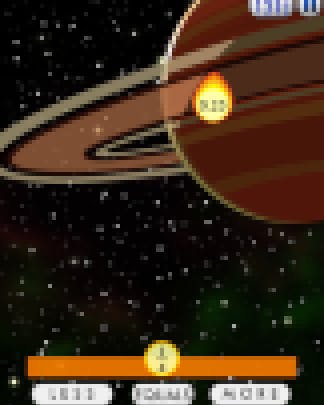
Fractions is the updated version of Adauto and Klein’s Master’s project from Stanford's Learning Design and Technology program from 2010. In this game, you control a bouncing ball by tilting your iPad to each side. Stamped on the ball is a symbolic representation of a fraction: sometimes it’s a decimal, sometimes it’s a pie graph, and sometimes it’s simply a regular fraction. At the bottom of the screen is a number line segment. Your goal is to bounce the ball onto the part of the number line represented by the fraction and if you miss the spot three times in a row, you lose.
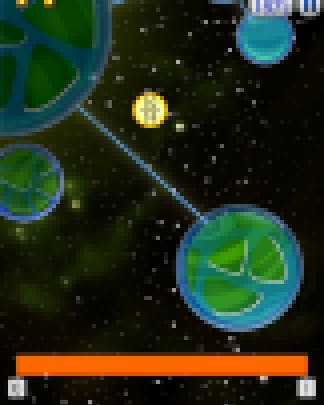
There are 25 levels and as you progress further, the fractions get more complex and the ball bounces faster. As this happens, it becomes increasingly difficult to target the correct spot on the number line. If you have a strong understanding of fractions, then finding 1/4 on a number line isn’t much harder than finding 5/19, but the increasing ball speed adds a layer of execution complexity that unnecessarily conflicts with the game’s educational goals. I’m pretty good with fractions (seriously, I welcome challengers in fraction arithmetic if you ever see me in person) but I never got past level 19 (that’s 76% for those keeping track). I knew where on the number line each fraction resided, but I would inevitably lose because the ball was bouncing too fast.
Despite being explicitly designed to elicit Flow, I found Fractions a rather poor example of it. My optimal Flow Zone was around Levels 11-17, but as soon as I missed three bounces in a row, I was sent back to Level 1 (Boredom Zone). When I’m comfortably in the Flow Zone the game is pretty fun, but I think a better design would be to send the player back a few levels instead of all the way back to the beginning.
Flow Score: 7/10
Motion Math: Wings

In Wings, you control the flight of a bird that encounters pairs of multiplication problems and earns points by touching the side whose product is greater. Each level takes about 80 seconds and starts off slowly but picks up speed as the level progresses. By the end of a level, you have less than a second to determine the greater product (less for large block groupings, which take a while to fully enter the screen). Since you only need to tilt left or right, selecting the correct answer is easier than in Fractions, but a single second is still not very much time.

Consider this: The average adult reads 300 words per minute (0.2 seconds per word). “Reading” one block grouping is sort of like reading two words (count the vertical blocks, then count the horizontal blocks) and let’s say solving the multiplication takes another 0.2 seconds (extremely fast, even for a fluent multiplier). That’s a minimum of 1.2 seconds to reasonably compare two groups. For larger blocks, counting sides takes even longer and you have less time to do so. Unless you’re a counting savant, it’s impossible to calculate consistently in the given time-frame.
Even in advanced multiplication, every level in Wings starts out slow and easy but the difficulty quickly shoots through the roof. Wings violates Flow principles by quickly moving from the Boredom Zone to the Anxiety Zone, without spending nearly enough time in the optimal, Flow Zone.
Flow Score: 4/10
Motion Math: Zoom
Zoom has a pretty unique game mechanic: You are shown a number and your goal is to find where it lies on a number line (sound familiar?). Instead of targeting it with a bouncing ball though, you must manipulate the scale of the number line to find the location. That’s it. That’s the whole game. Doesn’t sound too exciting, does it?


Actually, it’s a lot of fun! With a concept reminiscent of Ray and Charles Eames’s Powers of Ten, Zoom has surprising strategic depth. When traversing from 2,045 to 3,045, you need to decide how far to zoom: Is it faster to zoom out to the hundreds and scroll 10 segments or to zoom out to the thousands and scroll only one segment? Or maybe you should just ignore the zoom and scroll 1,000 segments directly to the right. Whatever strategy you use, the game does not explicitly punish or reward you, which keeps the difficulty at the exact right level for each player.
Zoom gets a perfect Flow score.
Flow Score: 10/10
Motion Math: Questimate

Questimate is a trivia game where you pick a category, then construct a question from a few fragment choices, then estimate the answer. If your estimate is close to the real answer, you get some points and if it’s not, you lose a heart. My first time through, I picked the “History of Awesome” category and I got almost every single problem wrong by a wide margin. Memorizing facts and dates is simply not something I want to waste brain space on nowadays. Why bother estimating dates when I could just ask my good friend, Siri? Which is exactly what I ended up doing.
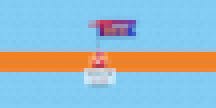
Flow Score: 0/10
Motion Math: Match

In Match, you match and clear tiles with equal values on them. Match enough and you unlock a drawing of a cartoon animal. Simple, easy to understand, and lots of fun! This is exactly the kind of game that quickly puts you in a Flow state. A few times on Impossible difficulty, I got stuck on a board with no matches, forcing me to combine tiles. I’m not sure if this is a feature or a bug but I found the combination mechanic to be confusing and unnecessary. Despite this, I still really like Match.
Flow Score: 8/10
Motion Math: Hungry Fish/Guppy

Despite being released in 2012, Hungry Fish is still hanging on to a top spot in the App Store’s Education category. In this game, you combine bubbles into sums that match the number on your fish’s body, inspiring your fish to eat it and grow larger. Eat enough bubbles and you will be big enough to chomp on the angry green fish hanging around. (Starve your fish and the green fish will eat you). Occasionally, you can pick up a glowing orb at the end of the level which unlocks new colors and fish parts with which you can customize your piscine friend.

The game is beautiful and relaxing, and it nails the Flow curve perfectly—perhaps it’s no coincidence that Chen’s own inaugural game, Fl0w, is also about an aquatic creature that consumes detritus to grow bigger. This is not my favorite Motion Math game, but I can see why Hungry Fish and it’s little brother, Hungry Guppy (same game, easier math), are so popular.
Flow Score: 10/10
Motion Math: Pizza
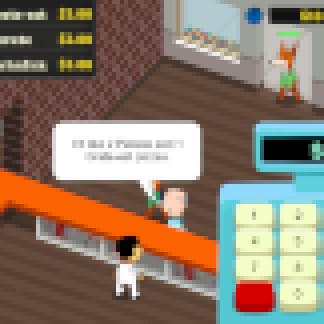
Whether they involve roller coasters or lemonade stands, business simulation games (also known as Tycoon games) are a timeless genre that test player’s skills in math and economics. Pizza combines this with Time Management: a newer game genre popularized by the Diner Dash series and it’s heroine, Flo. (As you might guess from the name of the main character, yes, Time Management games excel at inducing Flow.)
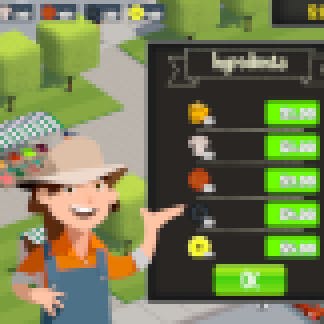
I like Tycoon games and I really like Time Management games, but I LOVE Motion Math: Pizza. There is a perfect balance of calm and careful calculation (comparing vendor prices when buying ingredients), fast and frantic arithmetic (totalling customer checks and handing them their pizzas), and meaningful creativity (the amount of ingredients used to decorate your pizzas determines the cost per unit). The game can get quite difficult, but it scales well—you set the price of your own pizzas, which naturally controls the complexity of the sales calculations.
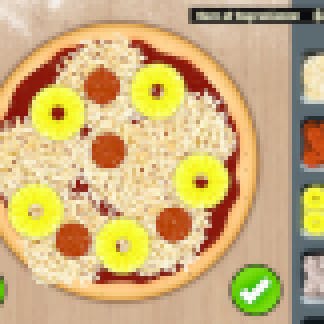
Designed, developed and drawn by Chilean artist, Ignacio Shiefelbein (another member of the 2010 Stanford LDT graduate cohort), Pizza feels completely unlike any of the other games in the Motion Math suite. This is by far my favorite game in the bundle and I give it top marks.
Flow Score: 11/10
Motion Math: Cupcake

Cupcake is Shiefelbein’s followup to Pizza and it’s… disappointing. Cupcake removes the Time Management gameplay and replaces it with cupcake orders framed as word problems. The storefront math, which was once fast-paced multiplication, is reduced slow, simple arithmetic with no time limit and no real penalty for wrong answers. The pizza shop’s time management mechanic was great because it tested multiplication fluency, i.e. speed and accuracy, but the cupcake shop removes all traces of that. Instead we get a tepid delivery task which involves driving down the street in a hard-to-control car to deliver cupcakes to customers who were at your shop a few seconds earlier. Why did they go home? Couldn’t they have waited a few seconds for me to hand them their cupcakes instead of making me deliver it to their houses?
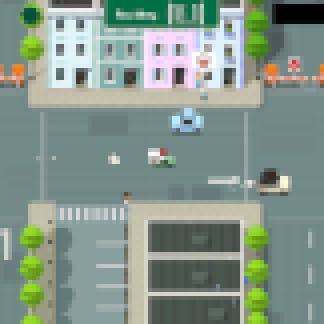
Cupcake took everything that was exciting about Pizza and replaced it with a dull grind. The Tycoon gameplay is still there, and it’s still relatively entertaining, but it pales in comparison to Pizza in almost every way. Even decorating cupcakes is less fun than decorating a pizza, as a side profile cupcake offers so much less room for artistic expression than the face of an entire pizza pie.

I wish I’d played Cupcake before Pizza because my expectations for the game were sky-high and it just didn’t deliver. The characters and art are still really charming, and once I got over my disappointment with the gameplay, I did have a reasonably fun time. Still, I can’t give the game any higher than a Flow Score of 7. I just can’t.
(Plus, I’d rather eat a slice of pepperoni pizza than a cupcake any day of the week)
Flow Score: 7/10
Games as Assessment
Motion Math recently received a Gates grant to evaluate the viability of using games for student assessments. Unfortunately, when a game’s controls get in the way of answering problems correctly (like the accelerometer-based Fractions and Wings) it suffers as an assessment tool. You can guarantee with some confidence that the student who passes Level 25 in Motion Math: Fractions has a strong conceptual understanding of fractions; however, you CANNOT guarantee that the student who fails to pass Level 5 lacks that same understanding. Put another way, if we start using games for assessment, we condemn the kid who is great at fractions but terrible at video games.
One final plea against games as assessment: If we return to Raph Koster’s definition of fun as “learning in a safe environment,” we can infer that being assessed on your performance in a game removes the safety, and thus removes the fun. I love me some Super Mario, but if I were forced to play, with my salary being docked every time I fell into a pit, the fun would quickly devolve into stress.
Summary
Totaling up all of Motion Math’s Flow Scores gives us 57/80, for an average of just north of seven Flow points per game. That’s pretty good! On top of that, there is tremendous academic and educational value in these games. Despite my frustrations with the gameplay of Fractions, it does a fantastic job of presenting the notoriously tricky Common Core 3.NF.A standards. Zoom is a great tool for developing estimation skills, Pizza drills cold, hard fact fluency and Questimate will test how fast you can type search queries into Wikipedia.
Only two Motion Math games actually take advantage of the iPad’s accelerometer—and they are the weaker titles in the collection. Of course, Flow is just another word for Motion, so perhaps the folks at Motion Math, realizing the limitations of accelerometer controls, shifted their focus from physical motion games to Flow-motion games. Comparing the accelerometer games to the non-accelerometer games, I think this was a good decision.
The Motion Math suite of games have received the highest GPA of any games I’ve written about (grades posted below) and are wonderful supplemental math products. If you are searching for math apps for your students, keep in mind these words from Motion Math founders Jacob Klein and Gabriel Adauto:
“Lastly, perhaps more importantly, we realized that [ Motion Math: Fractions] is best thought of not as a substitute for all fractions knowledge and fractions skills, but rather one specific, fundamental skill: the perception of fractions in multiple forms.” Motion Math: Perceiving fractions through embodied, mobile learning
Report Card
Flow Factor — B: If we ignore Questimate, this would be a B+.
Academic Value — A: Motion Math games cover some of the trickiest Common Core standards and can surely help a struggling student pass a math test.
Educational Value — B+: Fluency aside, I’m not sure these games have much value for students who are already good at math.


